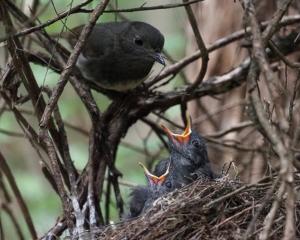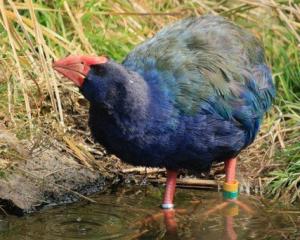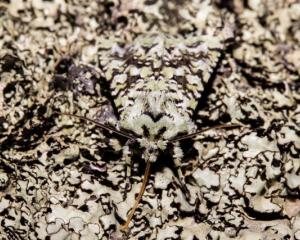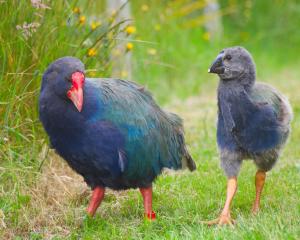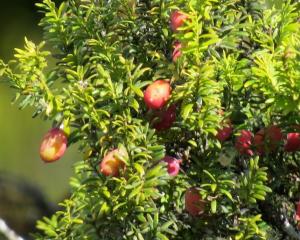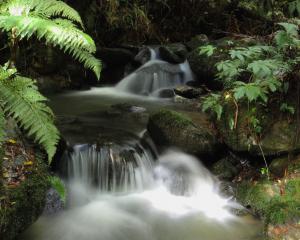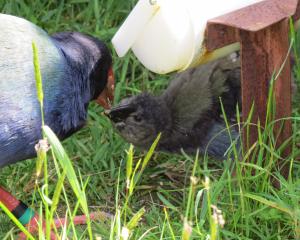Many people put food out for the birds in winter. But at Orokonui Ecosanctuary supplementary feeding is a more complex affair.
Orokonui ranger Kelly Gough is in trouble with her partner: She has been breeding mealworms in her hot-water cupboard: perfect for the job, she thought, because of its nice even temperature of 20degC.
Consternation! When her partner saw these mealworms feeding on what appeared to be sawdust, alarm-bells rang.
He had visions of them escaping and eating right through the house.
Mealworms morph into beetles, with wings, like huhu grubs.
Hardly desirable in a wooden house!
But his complaints didn't include the word ''sawdust'', so it was some time before Kelly understood his concern and could explain: the ''sawdust'' was actually bran.
But how did Kelly get into this strange hobby?
The need arose when Orokonui acquired 15 tuatara born in the University of Otago zoology department as part of its research programme.
They were housed in a specially built tuatarium and needed supplementary feeding.
You can buy mealworms on Trade Me, the source of Kelly's initial breeding stock, but ever mindful of costs, she researched what was needed to breed them herself.
Since Orokonui had no heat-pads to provide the necessary warmth, the cupboard at home seemed the ideal solution.
The healthier dietary option for the tuatara longer term is crickets, but those don't thrive in Dunedin's cool climate.
Breeding them at home was not an option, as they have a penchant for escaping.
So a heat-pad was bought for the Orokonui garage, and now volunteers working there are treated to the merry sound of crickets chirping all day long.
However, when their day to become tuatara fodder arrives the crickets don't readily accede to their fate.
It is first, catch your cricket!
The duty volunteer's attempts to catch them provides great entertainment for anybody watching.
They can leap amazingly high and often end up on the floor, where they are impossible to catch.
But, in due course, they will find their way back to the warmth of the heat-pad and breeding box.
The volunteer releasing crickets at the mouth of the tunnel homes of the two advocacy tuatara, can feel guilty, knowing that these lively creatures diving straight into the ''safety'' of the dark tunnel are in fact going to their certain death in the jaws of the tuatara.
Apparently, however, not always without putting up a defence.
Kelly says that the larger crickets will actually bite the tuatara or gecko predator.
Supplementary feeding for reintroduced species has been a feature of the Orokonui project from the start.
When the first kaka were released, nobody knew for sure whether the Orokonui bush would provide enough nourishment for them, so ''Grandpa's feeders'', were introduced to make a supply of nuts and seeds available to them, along with the sugar-water that the tui and bellbirds also enjoy.
Bird nourishment and visitor pleasure go hand in hand.
Then the takahe arrived and rapidly learned that there was extra food available daily at 11am.
They thrived on it to such an extent that they had to be put on a diet for a while. Clearly, the natural food available to them was more than sufficient. But they still enjoy their pellets from the hopper, albeit in a smaller quantity than before, and so continue to provide reliable viewings for visitors.
The mealworms are harvested not just for jewelled gecko and tuatara: the Otago skinks have developed a taste for them, and will now react merely to the throwing action of an arm: quick learners.
As are robins.
Several of the Orokonui-born robins have established territories up on the trust land and accept the tasty morsels eagerly.
While they do not need supplementary feeding, it is a way of encouraging them to see humans as a possible source of food, and so to appear when people are near, delighting visitors.
Kelly's breeding efforts have paid off in more ways than anyone anticipated.
She is now often able to supply others with her produce.
And their value for Orokonui's livestock is not just as nourishment.
It seems that even geckos and tuatara can get a bit bored with life in captivity.
If the food being supplied becomes monotonous they lose interest in it and stop hunting.
So the addition of crickets to the mealworms and beetles has noticeably improved the hunting abilities of the captive tuatara, and Gary the jewelled gecko in the visitor centre.
The latest arrivals needing supplementary feeding initially are the 12 juvenile tokoeka now in Orokonui's kiwi creche.
Under the tutelage of Haast Doc ranger Sian Bent, Kelly has been learning to make up the mix of food they require.
But that is another story.
• Kelly Gough is a ranger at Orokonui Ecosanctuary with responsibilities for animal husbandry, volunteer rosters and assisting with translocations.


